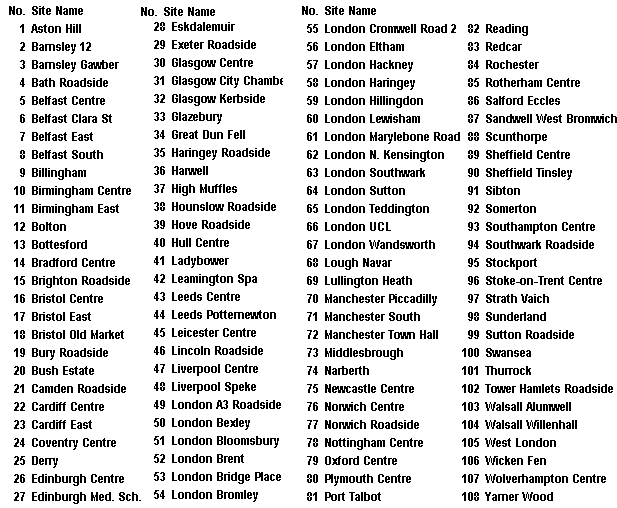A central unit collects the data from these sites every hour, and then checks and stores it for further analysis. The number of sites has expanded considerably over the last 2-3 years, as local authority sites affiliate to the network and also as more directly funded sites have been established. Details of the pollutants measured are shown with the map.
A range of pollutants are measured across the country. Any given site may measure different species, depending on its location and monitoring objectives. Sites are set up to assess the air quality in areas of high population, or in rural areas to assess the impact of pollution carried long distances.
You can access up-to-date hourly data from all automatic sites, together with an air pollution forecast by Ceefax (pages 410 - 417), Teletext (page106), and a freephone telephone service (0800 556677). Air pollution information is also available via the Internet - the Air Pollution Information pages on the World Wide Web contain the latest hours measurements from all sites, as well as a forecast of air pollution for the next 24 hours and background information about air pollution issues.
Air pollution levels are described in four bands, based on health effects, as 'low', 'moderate', 'high' and 'very high' levels of pollution. A separate leaflet has been produced on the banding system and health effects - "Air Pollution - what it means for your health" - which is available from the contact addresses given on the back cover of this brochure.
All of the historic data from the networks is also available on the World Wide Web via the National Air Quality Information Archive, together with comprehensive information about emissions into the atmosphere from the National Atmospheric Emissions Inventory. The Archive is also available on CD. Details of how to access all of these sources of information are given in the last section of this brochure.


